Potrebujeme váš súhlas na využitie jednotlivých dát, aby sa vám okrem iného mohli ukazovať informácie týkajúce sa vašich záujmov. Súhlas udelíte kliknutím na tlačidlo „OK“.
ASTM D6600-00(2013)
Standard Practice for Evaluating Test Sensitivity for Rubber Test Methods
Automaticky preložený názov:
Štandardná prax pre hodnotenie testu citlivosti na gumové skúšobné metódy
NORMA vydaná dňa 1.11.2013
Informácie o norme:
Označenie normy: ASTM D6600-00(2013)
Poznámka: NEPLATNÁ
Dátum vydania normy: 1.11.2013
Kód tovaru: NS-35822
Počet strán: 16
Približná hmotnosť: 48 g (0.11 libier)
Krajina: Americká technická norma
Kategória: Technické normy ASTM
Kategórie - podobné normy:
Anotácia textu normy ASTM D6600-00(2013) :
Keywords:
absolute test sensitivity, calibration material, reference material, relative test sensitivity, signal-to-noise ratio, test sensitivity, ICS Number Code 83.040.01 (Raw materials for rubber and plastics in general)
Doplňujúce informácie
| Significance and Use | |||||||||||||||||||||||||||||||||||||||||||||
|
5.1 Testing is conducted to make technical decisions on materials, processes, and products. With the continued growth in the available test methods for evaluating scientific and technical properties, a quantitative approach is needed to select test methods that have high (or highest) quality or technical merit. The procedures as defined in this practice may be used for this purpose to make testing as cost effective as possible. 5.2 One index of test method technical merit and implied sensitivity frequently used in the past has been test method precision. The precision is usually expressed as some multiple of the test measurement standard deviation for a defined testing domain. Although precision is a required quantity for test sensitivity, it is an incomplete characteristic (only one half of the necessary information) since it does not consider the discrimination power for the FP (or constituent) being evaluated. 5.3 Any attempt to evaluate relative test sensitivity for two different test methods on the basis of test measurement standard deviation ratios or variance ratios, which lack any discrimination power information content, constitutes an invalid quantitative basis for sensitivity, or technical merit evaluation. Coefficient of variation ratios (which are normalized to the mean) may constitute a valid test sensitivity evaluation only under the special condition where the two test methods under comparison are directly proportional or reciprocally related to each other. If the relationship between two test methods is nonlinear or linear with a nonzero intercept, the coefficient of variation ratios are not equivalent to the true test sensitivity as defined in this practice. See discussion of example in X1.1.4. The figure of merit defined by test sensitivity and its various classifications, categories, and types as introduced by this practice permits an authentic quantitative test sensitivity evaluation. |
|||||||||||||||||||||||||||||||||||||||||||||
| 1. Scope | |||||||||||||||||||||||||||||||||||||||||||||
|
1.1 This practice covers testing to evaluate chemical constituents, chemical and physical properties of compounding materials, and compounded and cured rubbers, which may frequently be conducted by one or more test methods. When more than one test method is available, two questions arise: Which test method has the better (or best) response to or discrimination for the underlying fundamental property being evaluated? and Which test method has the least error? These two characteristics collectively determine one type of technical merit of test methods that may be designated as test sensitivity. 1.2 Although a comprehensive and detailed treatment, as given by this practice, is required for a full appreciation of test sensitivity, a simplified conceptual definition may be given here. Test sensitivity is the ratio of discrimination power for the fundamental property evaluated to the measurement error or uncertainty, expressed as a standard deviation. The greater the discriminating power and the lower the test error, the better is the test sensitivity. Borrowing from the terminology in electronics, this ratio has frequently been called the signal-to-noise ratio; the signal corresponding to the discrimination power and the noise corresponding to the test measurement error. Therefore, this practice describes how test sensitivity, generically defined as the signal-to-noise ratio, may be evaluated for test methods used in the rubber manufacturing industry, which measure typical physical and chemical properties, with exceptions as noted in 1.3. 1.3 This practice does not address the topic of sensitivity for threshold limits or minimum detection limits (MDL) in such applications as (1) the effect of intentional variations of compounding materials on measured compound properties or (2) the evaluation of low or trace constituent levels. Minimum detection limits are the subject of separate standards. 1.4 This standard does not purport to address all of the safety concerns, if any, associated with its use. It is the responsibility of the user of this standard to establish appropriate safety and health practices and determine the applicability of regulatory limitations prior to use. 1.5 The content of this practice is as follows:
|
|||||||||||||||||||||||||||||||||||||||||||||
| 2. Referenced Documents | |||||||||||||||||||||||||||||||||||||||||||||
|
|||||||||||||||||||||||||||||||||||||||||||||
Podobné normy:
Historická
1.10.2012
Historická
1.1.2014
Historická
1.7.2010
Historická
1.9.2013
Historická
1.2.2011
Historická
1.11.2010



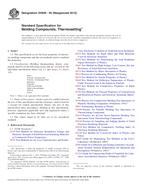 ASTM D5948-05(2012)..
ASTM D5948-05(2012)..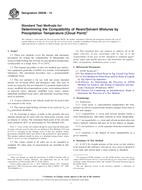 ASTM D6038-14
ASTM D6038-14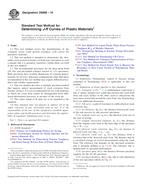 ASTM D6068-10
ASTM D6068-10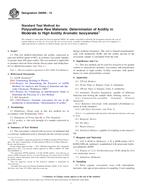 ASTM D6099-13
ASTM D6099-13 ASTM D6339-11
ASTM D6339-11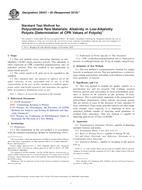 ASTM D6437-05(2010)e..
ASTM D6437-05(2010)e..
 Cookies
Cookies
